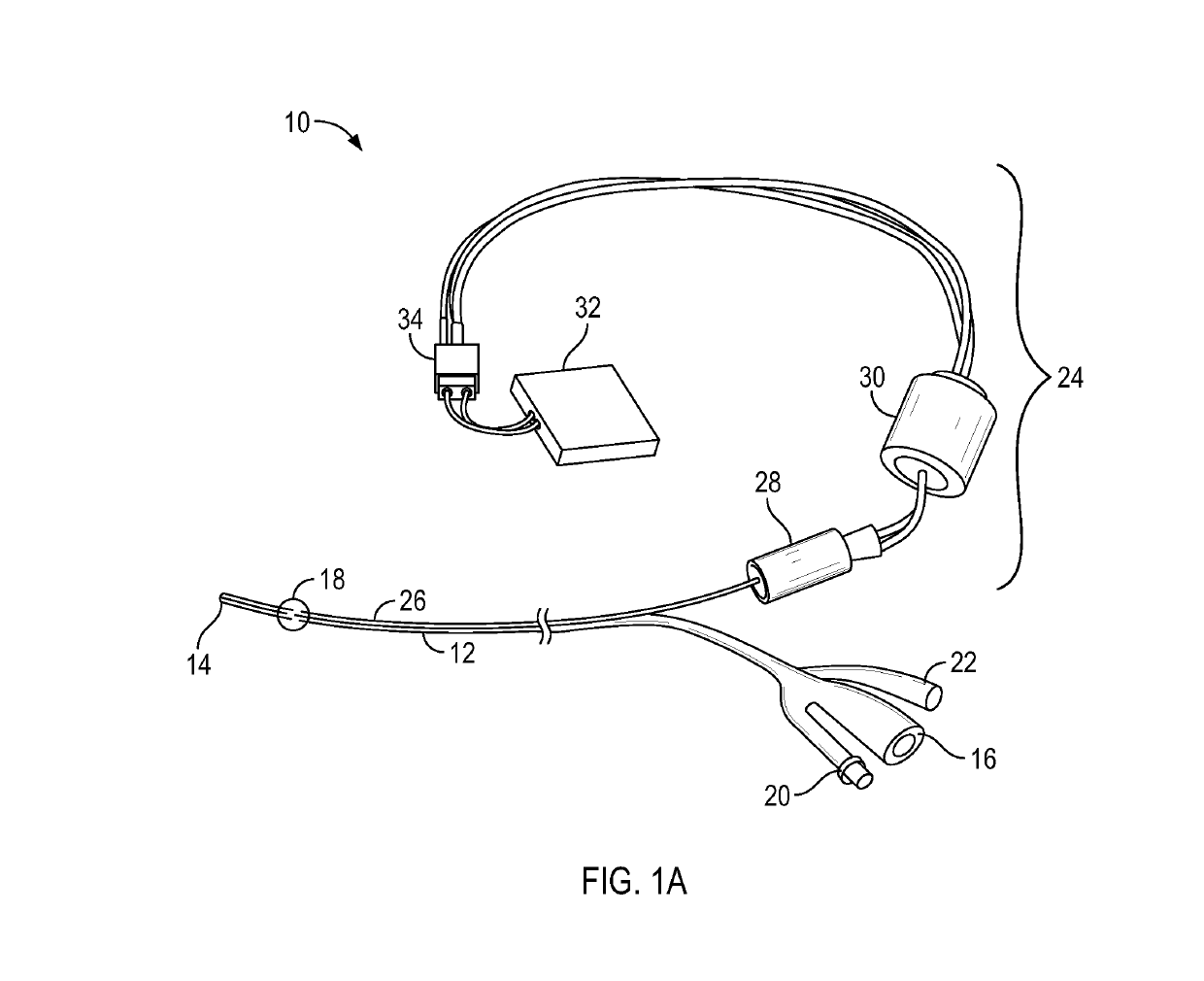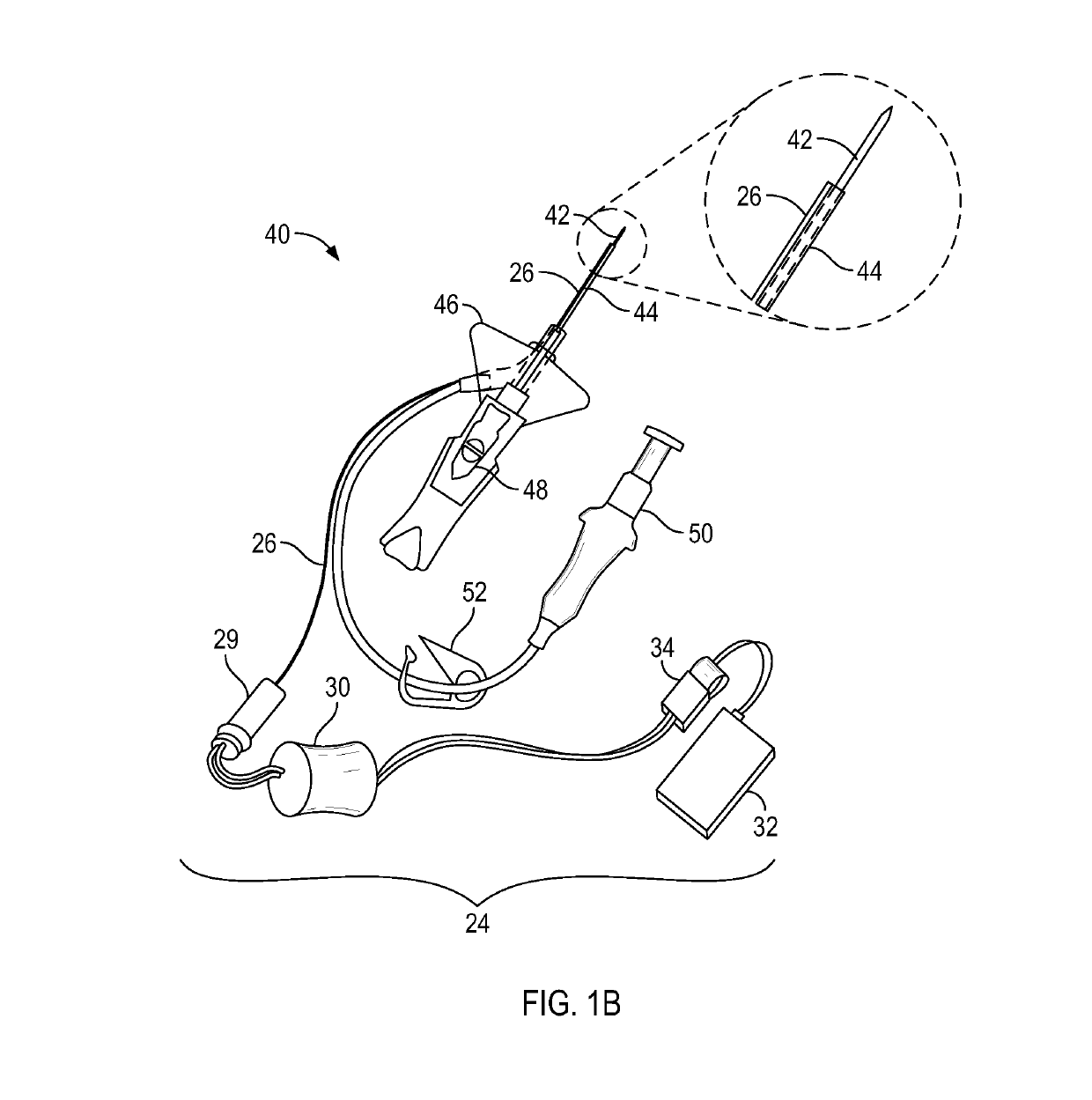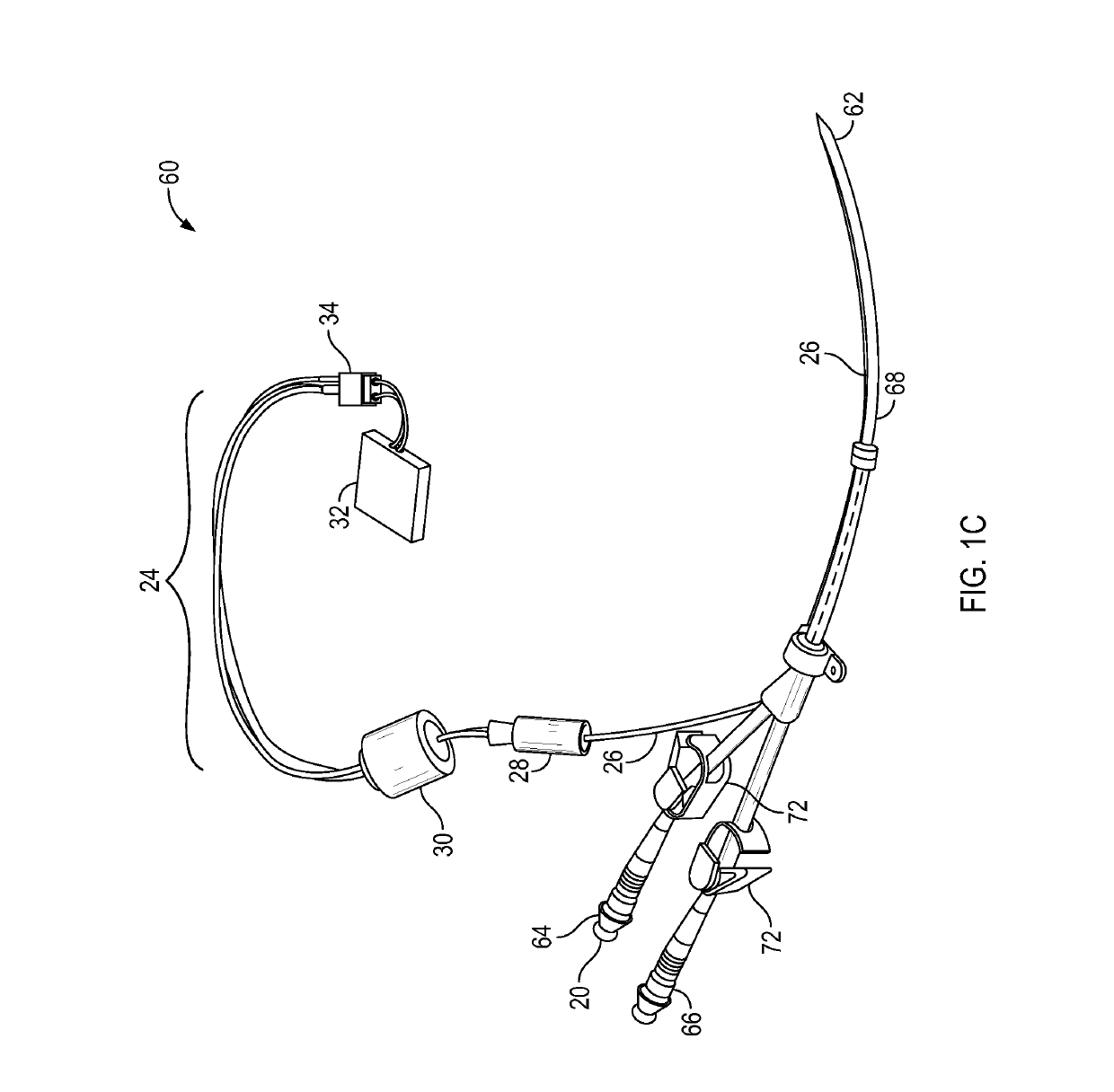Method, system, and devices of safe, antimicrobial light-emitting catheters, tubes, and instruments
a light-emitting catheter and antimicrobial technology, applied in the field of catheters, tubes, instruments, can solve the problems of multi-target damage in exposed microbial cells, and achieve the effects of reducing the risk of infection, and minimizing the side effects of patients
- Summary
- Abstract
- Description
- Claims
- Application Information
AI Technical Summary
Benefits of technology
Problems solved by technology
Method used
Image
Examples
first embodiment
[0071]Referring to FIG. 1A a light-emitting antimicrobial catheter for use in the urinary tract is illustrated generally at 10. The catheter 10 includes an optically transparent tube 12 with a tip 14 and a drain 16. The catheter 10 may include an inflatable balloonl8 near the tip 14. An inflation port 20 is provided to inflate the balloon 18. In some configurations, the catheter 10 may include an irrigation port 22 as well. A light transmitter 24 is connected to the tube 12 and configured to emit light through the optically transparent wall of the catheter 10. The light transmitter 24 may include a side-emitting optical fiber 26 connected to a light source 28, a control circuit 30 to control the light source 28, and a power source 32, to power the light source 28 and control circuit 30. In some embodiments, the drain 16, inflation port 20, and / or irrigation port 22 may also be made from optically transparent material to transmit light to the patient's skin underlying the catheter 10...
second embodiment
[0072]Referring to FIG. 1B a light-emitting antimicrobial catheter for intravascular use is illustrated generally at 40. In particular, a peripheral venous catheter is shown. The catheter 40 includes a tip 42 for insertion into a vein of the patient and delivery of a cannula 44 into the vein and wings 46 for handling and securing the catheter 40 with adhesive to the patient's body. The cannula 44 is an optically transparent tube for delivery for fluids and medication into the vein. The exterior portion of the body of the catheter 40, including wings 46, may be optically transparent plastic as well, for delivery of light from the light emitter to the skin of the patient underlying the catheter 40. The tip 42 is partially withdrawn after insertion of the cannula 44, leaving the cannula 44 within the vein. A valve 48 may be provided for delivery of medication by syringe to the patient. A port 50 may be included for connection of an infusion line to the catheter 40. A clamp 52 may be in...
third embodiment
[0073]Referring to FIG. 1C a light-emitting antimicrobial catheter for intravascular use is illustrated generally at 60. In particular, a hemodialysis catheter is shown. The catheter 60 includes a tip 42 for insertion into a vein of the patient. The catheter 60 includes a cannula 68 which includes a venous lumen 64 and an arterial lumen 66, for drawing away and returning blood, respectively, to the patient. The lumens 64, 66 and cannula may be formed from an optically transparent material. Each lumen may include its own port 70. Each lumen may also include a clamp 72 to shut off the respective lumen 64, 66. A light transmitter 24 is connected to the lumen 64, 66 and / or cannula 68 and configured to emit light through the optically transparent material. The light transmitter 24 may include a side-emitting optical fiber 26, connected to a light source 28, a control circuit 30 to control the light source 28 and a power source 32, to power the light source 28 and control circuit 30.
[0074...
PUM
 Login to View More
Login to View More Abstract
Description
Claims
Application Information
 Login to View More
Login to View More - R&D
- Intellectual Property
- Life Sciences
- Materials
- Tech Scout
- Unparalleled Data Quality
- Higher Quality Content
- 60% Fewer Hallucinations
Browse by: Latest US Patents, China's latest patents, Technical Efficacy Thesaurus, Application Domain, Technology Topic, Popular Technical Reports.
© 2025 PatSnap. All rights reserved.Legal|Privacy policy|Modern Slavery Act Transparency Statement|Sitemap|About US| Contact US: help@patsnap.com



